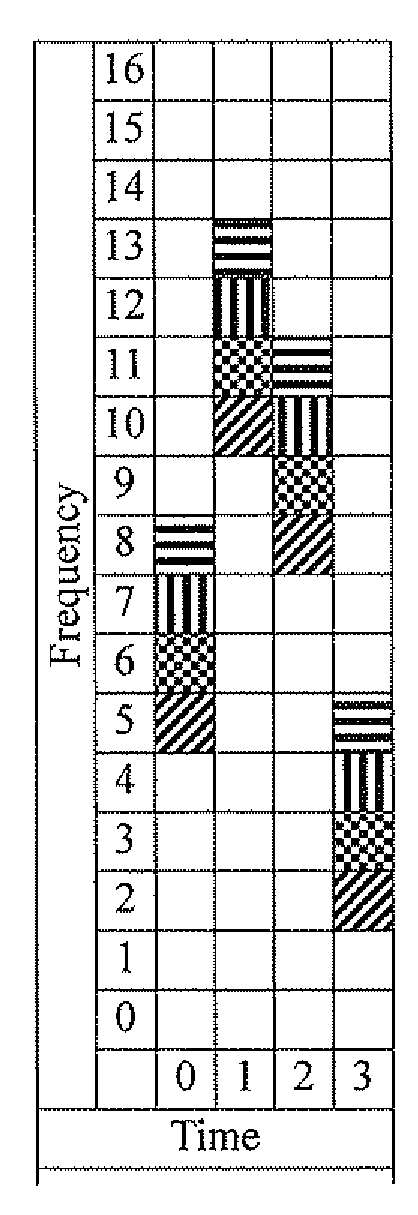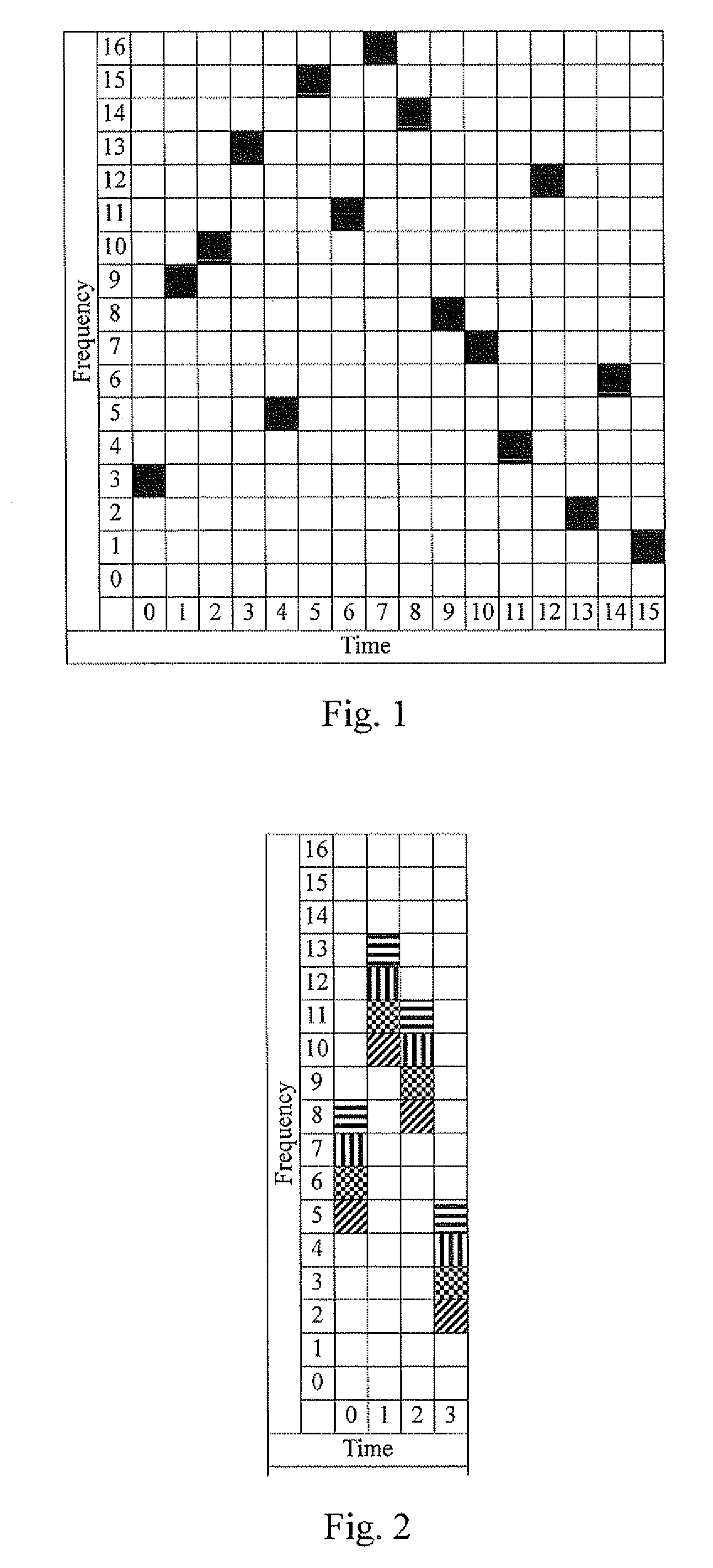Method for allocating time-frequency resources in a communication system
a technology of communication system and time frequency resource, which is applied in the direction of transmission path sub-channel allocation, wireless commuication services, electrical equipment, etc., can solve the problems of higher error rate and signal interference between different cells
- Summary
- Abstract
- Description
- Claims
- Application Information
AI Technical Summary
Benefits of technology
Problems solved by technology
Method used
Image
Examples
Embodiment Construction
[0032]The present invention will be described in detail with reference to accompanying drawings and embodiments.
[0033]In the embodiments of the PCT application PCT / CN2004 / 000128, as the available value of a time shift and value of a frequency shift are relatively finite, the random property is insufficient, which may lead to higher probability of bigger granularity overlap of traffic channels between cells, reflected in a symbol synchronization system by a complete overlap of time-frequency patterns and in a symbol non-synchronization system by a partial overlap of each symbol within a time-frequency pattern. When there is a bigger granularity overlap, the solution in accordance with the above PCT application will lead to higher error rate.
[0034]In an embodiment of the present invention, the time-frequency resources of a cellular wireless communication system based on OFDM technology are expressed as a two-dimensional time-frequency plane. The time-frequency plane in a TTI is a set ...
PUM
 Login to View More
Login to View More Abstract
Description
Claims
Application Information
 Login to View More
Login to View More - R&D
- Intellectual Property
- Life Sciences
- Materials
- Tech Scout
- Unparalleled Data Quality
- Higher Quality Content
- 60% Fewer Hallucinations
Browse by: Latest US Patents, China's latest patents, Technical Efficacy Thesaurus, Application Domain, Technology Topic, Popular Technical Reports.
© 2025 PatSnap. All rights reserved.Legal|Privacy policy|Modern Slavery Act Transparency Statement|Sitemap|About US| Contact US: help@patsnap.com



